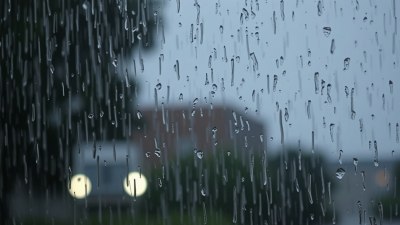What If Clouds Had Their Own Gossip Network
Explore a whimsical scenario where clouds communicate and gossip about the world below.

Imagine a world where clouds aren’t just for providing shade or rain, but are also buzzing with chatter and gossip about the happenings below. What if the fluffy white cumulus clouds shared tales of the people walking in the park, or the nimbostratus clouds discussed the chaos of a thunderstorm? This whimsical thought experiment invites us to think about the sky in an entirely new way, envisioning clouds as a society with their own network of gossip, complete with drama, friendships, and even rivalries. Here’s a deep dive into what this fantastical idea could entail.
Cloud Personalities
In our imagined gossip network, different types of clouds would likely have distinct personalities. The light, fluffy cumulus clouds would be the cheerful gossipers, always eager to share the latest news and catch up on the latest happenings. They would flit about the sky, observing everything from birthday parties to wedding ceremonies below and joyfully reporting on these events to their cloud friends.
On the other hand, the stormy cumulonimbus clouds would bring a more serious tone to the gossip. Known for their dramatic flair, they would share stories of earth-shattering events—like floods or lightning strikes—adding a layer of suspense and intrigue. The sleek cirrus clouds, often high up and aloof, might act as the wise old sages of this community, offering sage advice and long-range forecasts based on their high-altitude perspectives.
The Gossip Flow
So how would this gossip flow work? Perhaps it would be similar to how humans gather around coffee machines or water coolers. Clouds could communicate through a series of swirling patterns and shapes, signaling excitement or surprise with abrupt changes in their formations. A gathering of cumulus clouds might form in a circle, exchanging news in a friendly chat, while a lone cirrus cloud could drift in, delivering important updates from the stratosphere.
Imagine the scenes as clouds gather for a celestial conference, each vying for the chance to share their latest observations. They might trade tidbits about human interactions, such as how that couple in the park had a picnic or the rowdy children at the playground. The more sensational the story, the more animated the clouds would become, puffing up and swirling in excitement.
Ranking and Reputation
In our hypothetical cloud society, not all clouds would be viewed the same. The mammatus clouds, known for their unique, turbulent shapes, might be the gossip’s elite, capable of stirring up intrigue and excitement wherever they go. They may catch the eye of the lighter clouds, hungry for the juiciest stories, while the lower-status stratus clouds might feel left out when the heavier gossip flows high above them.
Retaliatory gossip could also emerge. If a cumulus cloud were to share an embarrassing story about a nearby cumulonimbus, it wouldn’t take long for the latter to retaliate, perhaps by casting shade in return or unleashing a dramatic downpour on the unassuming cumulus. The weather would become not just a phenomenon, but a stage for cloud politics.
Human Perspectives
As engaging as the gossip among clouds might be, how would this affect human perspectives? Picture a world where people occasionally looked up, not just to appreciate the weather but to catch the latest gossip circulating among the clouds. Children might spin tales about what the clouds were saying, creating fantastical stories about their interactions that mirror human life on the ground.
Could this whimsical perspective on cloud behavior lead to a more profound appreciation of nature? It might inspire people to be more aware of their surroundings, intrigued by the casual yet profound exchanges happening just above them. Artists and writers might find new muses in cloud observations, creating works inspired by the imagined conversations taking place overhead.
The Cloudy Gossip Challenge
With a culture of gossip, you can imagine how this could lead to misunderstandings and awkward situations—think about how misunderstandings happen in human relationships. A cloud might misinterpret the intention of another and share stories that escalate into rumors, leading to conflicts among different types. The result could be a buildup of tension, capped off by a dramatic rainstorm or a chaotic lightning show as clouds unleash their emotions onto the unsuspecting world below.
Disputes among clouds may also lead to intriguing alliances. Perhaps a group of cumulus clouds teams up with a bold cumulonimbus to take down a particularly snooty cirrus cloud perceived as a gossip bully. This alliance might create a dramatic stormfront, bringing both excitement and fear to the ground. The human characters below would find themselves caught in the midst of this celestial drama, perhaps shielding themselves from rain while speculating about what might have sparked the cloud spat.
Connecting the Clouds
This network wouldn’t just be about gossip; it could develop into something more profound. Clouds, in their shared experiences, could create bonds over mutual memories and history—remembering when they witnessed a beautiful sunset or participated in a thunderstorm. These shared experiences could deepen their connections and weave a complex social fabric. Over time, we might see clouds form a sense of identity, with groups of cumulus and stratus clouds bonding over the stories they gather, effectively creating a community.
The Climate Debate
However, it’s essential to consider that not all gossip would be light-hearted. The clouds may begin to discuss deeper environmental issues related to climate change. Perhaps the change in temperature can be sensed by these weather makers, igniting conversations about the human interference in natural cycles. The clouds might begin a dialogue on reducing emissions or increasing awareness among humans regarding their role in climate change.
This could even spark a passionate movement among the clouds: a collective known as “The Weather Guardians”—those clouds that advocate for better treatment of the environment. Their whispered messages could spread downwards, encouraging humans to adopt sustainable practices to preserve the beauty of the planet. Through this communal consciousness, clouds would evolve beyond mere soap opera dramas and become champions for ecological responsibility.
What Would People Say?
With imaginary news circulating among clouds, what would humans say? A local weatherman might jokingly comment on how the clouds seem to be engaged in gossip about traffic delays or storm predictions. Children, in particular, could create elaborate stories about clouds sending encoded messages through their formations, turning cloud-watching into a form of entertainment and creativity. It would be the new pastime to discuss what the clouds might be “talking” about as the sky transforms throughout the day.
For writers and poets, this whimsical scenario unleashes a treasure trove of inspiration, leading to imaginative works that ponder the ins and outs of weather and the nature of communication. With each fluffy shape taken into account, artists might start to blend stories about human interactions with those of clouds, illustrating a catchy anthology of celestial stories rooted in human experiences.
Conclusion
Imagining a world where clouds have their own gossip network can change our perception of nature. By personifying clouds, we encourage more appreciation for the natural phenomena occurring daily overhead. Whether they’re whispering secrets, engaging in pearl-clutching melodrama, or rallying for environmental support, the tales unfolding above us connect us in unexpected ways. These ideas inspire creative thought, remind us of our relationship with nature, and serve as a compelling metaphor for communication in our own lives.











